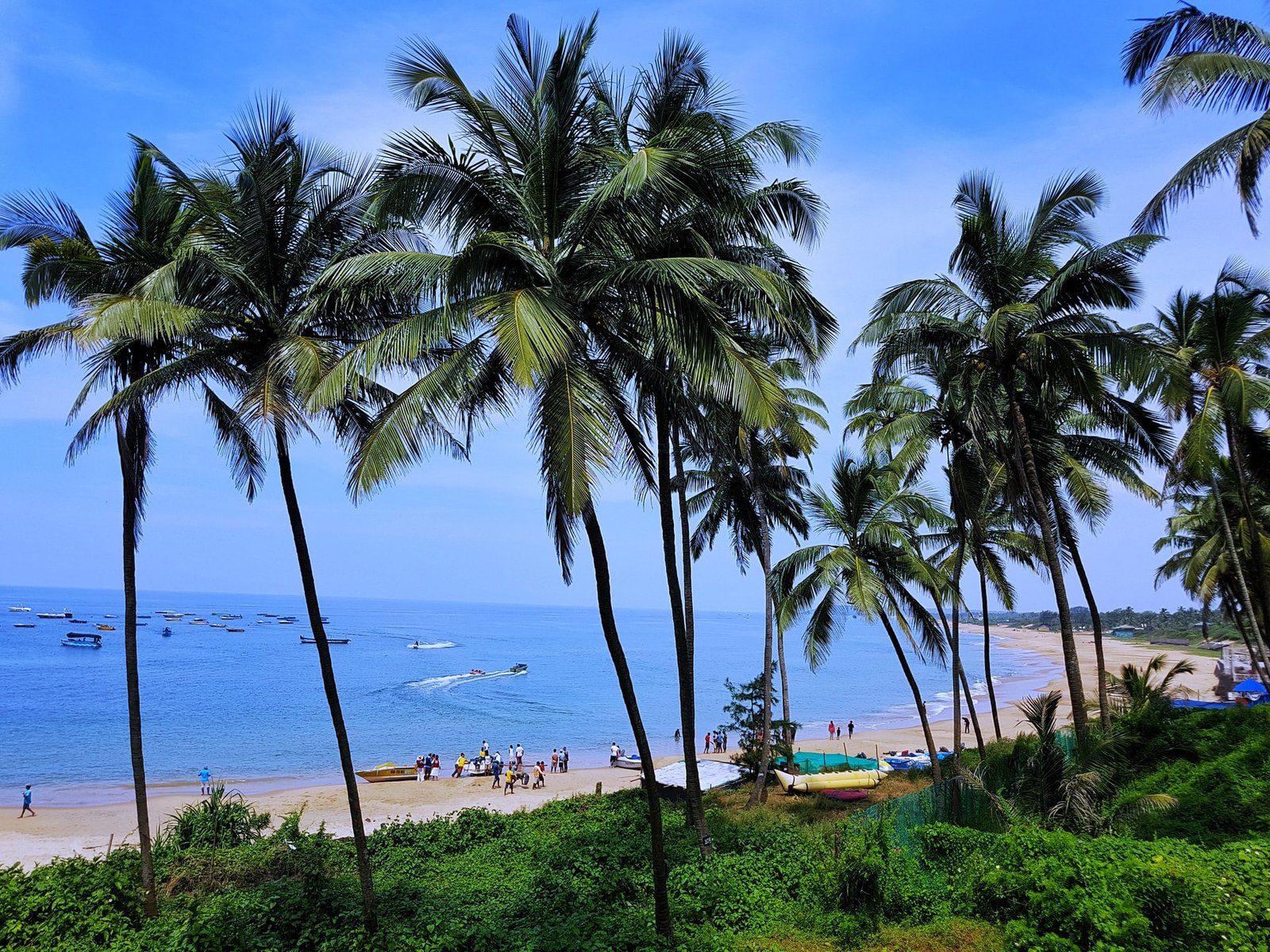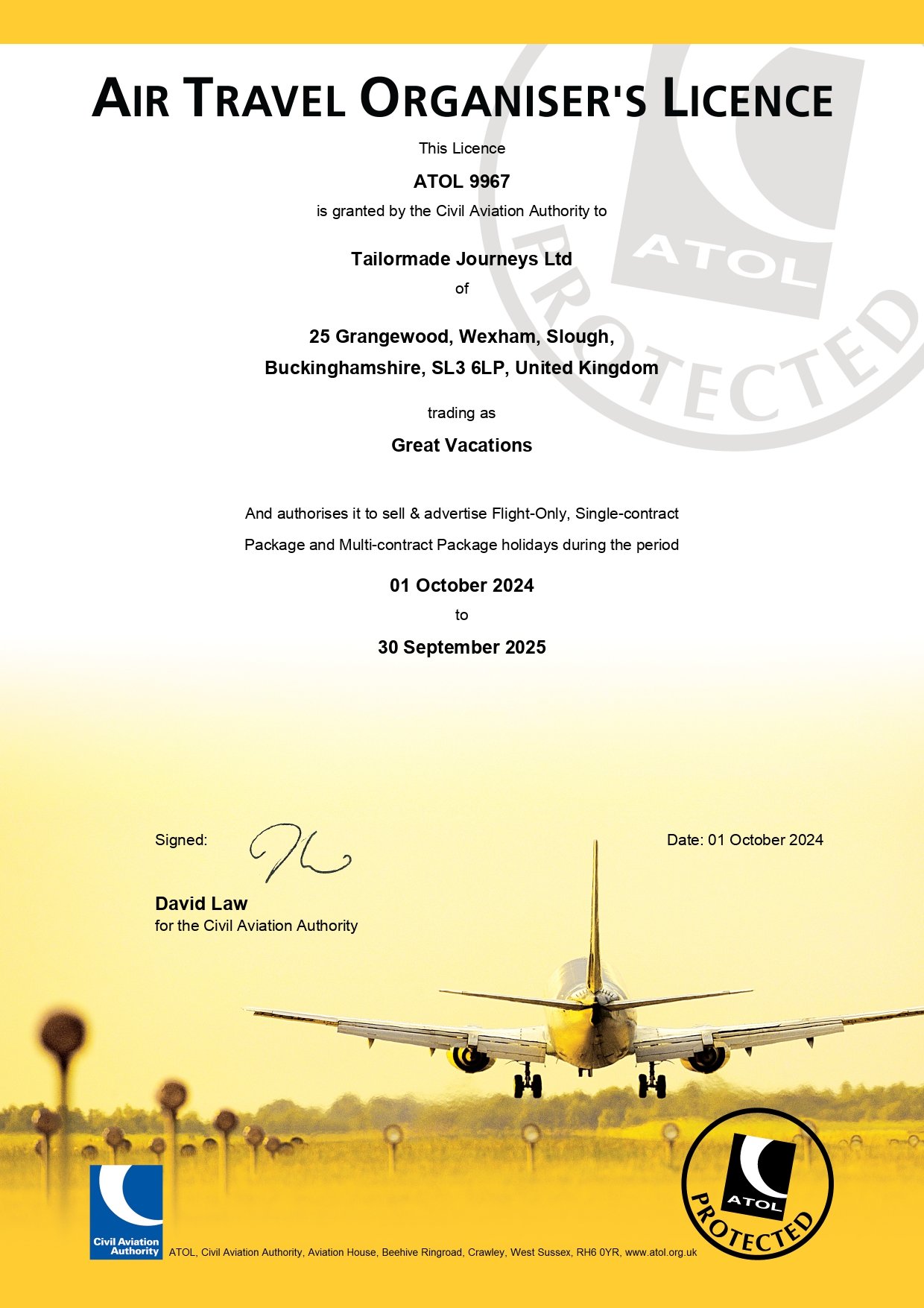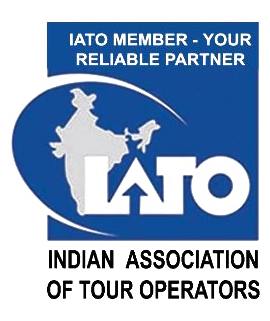Munnar is often regarded as one of the top hill...
Come, seek and be discovered. Match India’s rhythms to your heart, its colours to your mind, and find a travel experience that is yours alone. An India like no other. Friendly, warm, welcoming … and uniquely your own. Discover and Experience the Breathtaking India with Experts who show you the Insight of India a country with diverse culture and history. Let us take you to the …… Incredible India.
Visit India and you are sure to be amazed by its landscape ranging from snow-capped mountain ranges to deserts, plains, rainforests, hills, and plateaus! With an area of 3.3 million Sq. Km it is the seventh largest country in the world. It consists of twenty-eight states and seven Union Territories. India is also the second largest populous country in the world, next only to China. Its population is around 1027 million (as per 2001 census). Around 16% of the world’s population lives in India. However, regarding area, India accounts for only 2.42% of the total world area.
The Indian peninsula is separated from mainland Asia by the Himalayas: the world’s highest mountain chain. The highest point being K2 at 8,611 metres (28,251 ft) followed by Kangchenjunga, at 8,598 m (28,209 ft).
The country’s landmass is divided into four fairly clear regions:
- Northern mountain region
- Indo-Gangetic Plain
- Desert area
- Southern peninsula
It is bordered by Pakistan the north-west, China, Bhutan and Nepal to the north, Myanmar to the east and Bangladesh to the east of West Bengal. Sri Lanka, the Maldives and Indonesia are island nations to the south of India. Also surrounding the country is the Bay of Bengal in the east, the Arabian Sea in the west and the Indian Ocean in the south.
India can be organized along the compass points:
North India, shaped like a throat and two lungs, is the country’s largest region. It begins with the panhandle of Jammu and Kashmir, a dynamic area with terrain varying from arid mountains in the far north to the lake country and forests near Sringar and Jammu. Falling south along the Indus river valley, the North becomes flatter and more hospitable, widening into the fertile plains of Punjab to the west and the Himalayan foothills of Uttar Pradesh and the Ganges river valley to the East. Cramped between these two states is the capital city, Delhi.
The southwestern extremity of the North is the large state of Rajastan, whose principal features are the Thar Desert and the stunning “pink city” of Jaipur. To the southeast is southern Uttar Pradesh and Agra, home of the famous Taj Mahal.
West India contains the states of Gujarat, Maharashtra, Goa, and part of the massive, central state of Madhya Pradesh. The west coast extends from the Gujarat peninsula down to Goa, and it is lined with some of India’s best beaches. The land along the coast is typically lush, with rainforests reaching southward from Bombay all the way to into Goa. A long mountain chain, the Western Ghats, separates the verdant coast from the Vindya Mountains and the dry Deccan plateau further inland.
Home of the sacred Ganges River and the majority of Himalayan foothills, East India begins with the states of Madhya Pradesh, Bihar, Orissa, which comprise the westernmost part of the region. East India also contains an area known as the eastern triangle, which is entirely distinct. This is the last gulp of land that extends beyond Bangladesh, culminating in the Naga Hills along the Burmese border.
India reaches its peninsular tip with South India , which begins with the Deccan in the north and ends with Cape Comorin, where Hindus believe that bathing in the waters of the three oceans will wash away their sins. The states in South India are Karnataka, Andhra Pradesh, Tamil Nadu, and Kerala, a favorite leisure destination. The southeast coast, mirroring the west, also rests snugly beneath a mountain range—the Eastern Ghats.
India, also popularly known as Bharat or Hindustan, offers big regional variations in its climate, from cool mountain pastures beside the glaciers, through windy plateau, to warm river valleys and burning deserts. This diversity in the climatic conditions throughout the country is also reflected in its rich flora and fauna.
Tourist Information
Key Facts
Capital: New Delhi
Largest City – Mumbai
Area: 3,287,240 sq kms
Population: 1,182,318,000
Time: IST (UTC+5:30)
Currency: Indian Rupee (INR)
Languages: Hindi in the Devanagari script is the official language of the Union and English the “subsidiary official language”
Assamese, Bengali, Bodo, Dogri, Gujarati, Hindi, Kannada, Kashmiri, Konkani, Maithili, Malayalam, Manipuri, Marathi, Nepali, Oriya, Punjabi, Sanskrit, Santali, Sindhi, Tamil, Telugu, Urdu
Climate
The climate of India defies easy generalization, comprising a wide range of weather conditions across a large geographic scale and varied topography. Analyzed according to the Köppen system, India hosts six major climatic subtypes, ranging from desert in the west, to alpine tundra and glaciers in the north, to humid tropical regions supporting rain forests in the southwest and the island territories. Many regions have starkly different micro climates. The nation has four seasons: winter (January and February), summer (March to May), a monsoon (rainy) season (June to September), and a post-monsoon period (October to December).
India’s unique geography and geology strongly influence its climate; this is particularly true of the Himalayas in the north and the Thar Desert in the northwest. The Himalayas act as a barrier to the frigid katabatic winds flowing down from Central Asia. Thus, North India is kept warm or only mildly cold during winter; in summer, the same phenomenon makes India relatively hot. Although the Tropic of Cancer—the boundary between the tropics and subtropics—passes through the middle of India, the whole country is considered to be tropical.
As in much of the tropics, monsoonal and other weather conditions in India are unstable: major droughts, floods, cyclones and other natural disasters are sporadic, but have killed or displaced millions. India’s long-term climatic stability may be further threatened by global warming.
VISA Information
The India Visa is now online and can be applied Only 120 days prior to departure.
For the E TOURIST Visa:
Government of India has done the facility of E Tourist Visa on Arrival. This Visa is for Tourist going for holidays for less than 60 days in India. The E Visa is a double entry visa and can be obtained between 10 to 120 days prior to departure . You need only to fill the e TVOA forms online upload the photos and passport page ( with photo graph ) in PDF form and Photo in JPEG . All this is mentioned in Documents required.
You would need to fill the ETVOA visa application. This can be done 120 days prior to departure . Please do read the information before you start filling. Please NOTE you require 2 Photos each with Light / White Back ground and the size of the photo is specific to 2 inches by 2 inches which you need to get from a photo shop.
Kindly also keep your passport and photo scanned with you when filling the online E Visa application as you would need to upload.
https://indianvisaonline.gov.in/evisa/tvoa.html
You would also require a visa reference for India
Please visit website of Ministry of Home Affairs given below. Please put the cursor and you see the link
https://indianvisaonline.gov.in/evisa/tvoa.html
All Visitors to India require a visa :
An application form must be filled as per the requirements
Original passport valid for 6 months and above.
INDIAN EMBASSY
INDIA HOUSE,
ALDWYCH,
LONDON – WC2B 4NA
TEL : 020 7632 3035
Clothing
Travel as light as possible. Clothing and laundry are both quite inexpensive. Women should dress conservatively. Avoid tank tops or short skirts / shorts. The best outfit, especially during the hot summers, is a T-shirt worn with loose cotton trousers. These are comfortable, cool and easily washable. You can purchase them anywhere in India, at very reasonable rates, at any of the street shops. If you are adventurous, wear the Indian ‘salwar-kameez’. It is comfortable and free sized, and you will be amazed at the change of attitude among the shopkeepers, pedestrians and taxicab drivers!
Do not forget to remove your footwear when visiting a place of worship or mausoleum.
Food And Drink
Drink only bottled water. Buy it only from respectable or known outlets. In restaurants insist that they bring a sealed bottle to your table.
Try Indian Beer – it is quite drinkable.
Beef is not served in India. Pork is also not easily available.
Eat non-vegetarian food only in good restaurants. The meat in cheaper and smaller places is generally of dubious quality.
Vegetarian food is easily available, cheap, and of excellent quality.
Curd or yoghurt is served with most meals. It is a natural aid to digestion and helps temper the spicy food.
Health Precaution
Always drink bottled water.
For the first few days it might be advisable to clean your teeth in bottled water.
Eat fruit you can peel.
Always wash fruit well before eating it.
Wash your hands before and after eating.
Always keep a tube of mosquito repellent with you.
Always carry a kit of the basic emergency medicines you might need for diarrhoea, fever, etc. Also, band aids and an antiseptic ointment.
If you do catch a bug, do not panic. It will go away in a few days – but try the following tips to keep it down:
Drink lassi – a yoghurt drink. It will help tone down the bacteria.
Eat plain rice, or try a simple khichdi – an easily digestible mixture of rice and lentils.
Drink plenty of coconut water. It’s cooling, and naturally sterilized!
Drink plenty of fluids and take some electrolyte salts if the bug persists.
Social Interaction
If you are fair-complexioned, blonde or red-haired – and especially if you are female – chances are that you will be stared at continuously, specially in the smaller towns. Don’t be offended – they mean no harm, it is just curiosity.
Avoid crowds, especially if you are female.
Try to avoid shaking hands. Greet people with a ‘namaste’ (hands pressed together at chest level as if in prayer). You will be appreciated for using the Indian style of greeting.
Shopping
Try to shop only in government handicraft shops. There the prices are fixed and the quality is certified. If that is not an option, check the prices at a few shops before making a choice. Bargaining is standard and is enjoyed by all.
Get used to the fact that you will probably be charged more than the locals. If possible, take a local along when you go shopping.
Time
Everything in India takes time – longer than in most places. So always give yourself extra time for whatever you may have to do – even it is just a visit to the Post Office or changing money.
Indians joke about the concept of “Indian Stretchable Time” (IST). Certainly, if you’re a super-punctual sort, India can be frustrating. Make allowances for this.
Toilets
In India, public toilet facilities are few and far between, and those that are there should not be ventured into. Take every opportunity you can to use a clean a toilet in places such as hotels and restaurants. Make this a habit wherever you go.
Tipping
In hotels and restaurants, tips are not normally included in the bill.
Some hotels include service charges on their bills. In such cases tipping is not necessary. The standard tip is 10%.
In hotels, porters and room service attendants are normally tipped at the end of the stay, though an early tip is likely to get you better service.
Tipping of taxi drivers is not customary.
Others
Keep extra photocopies of the relevant pages of your passport. This will be required for Indian permits.
When asking for directions, ask shopkeepers, not pedestrians. Cross-check with at least two people.
Taxi and auto-rickshaw fares keep changing, and therefore do not always conform to readings on meters. Insist on seeing the latest rate card (available with the driver) and pay accordingly.
Insist on the taxi/auto meter being flagged down in your presence.
Beggars
Do not let them hassle you, and do not encourage them by giving them too much money. A one-rupee coin is sufficient.
Sightseeing
Dress codes for religious places can include covering your head, being barefoot etc. Ask, so that you don’t unwillingly give offence.
Some temples do not permit any leather articles at all on their premises.
Certain areas of temples are not open to Non-Hindus.
Most museums in India are closed on Mondays and Site Museums, those near archaeological monuments, on Fridays.
The dry summer heat can drain you completely. Drink lots of water and fluids.
The sun is strong. Remember to use sunscreen on exposed parts of the body. Wear sunglasses to screen out harmful rays.
Photography is not always permissible, and at many places it is permitted only at a fee. There is usually a higher fee for using a video camera.
Smoking is not allowed at all public places.
English is spoken at almost all tourist centers, but you can also request Government-trained and approved guides who also speak German, French, Spanish, Japanese, Italian or Russian.

 +44-1753-201201
+44-1753-201201
 +1-416-619-7795
+1-416-619-7795 +61-2-86078986
+61-2-86078986








